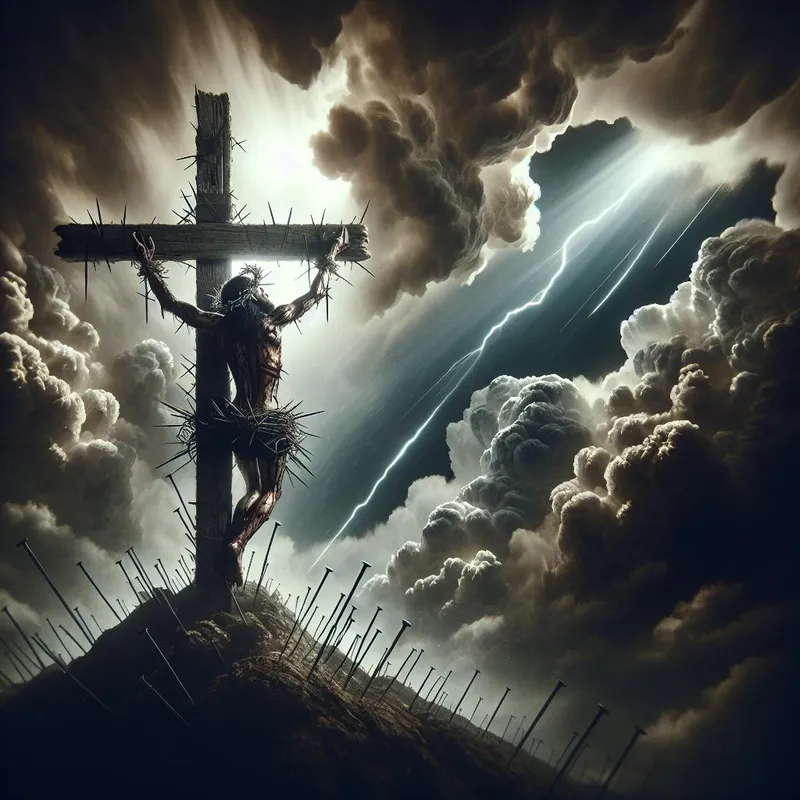
Where Was Jesus Crucified? Unveiling the Sacred Site
Posted on 08 June 2024
Where Was Jesus Crucified?
The precise location of where Jesus was crucified is a matter of debate among scholars. According to the Gospels, Jesus was crucified at a place called Golgotha, which means "place of the skull." This is mentioned in Matthew 27:33, Mark 15:22, Luke 23:33, and John 19:17. The Gospels provide a few clues about the location. John 19:20 states that it was "near the city," indicating that it was likely outside of the city walls. Mark 15:40 mentions that the location could be seen from a distance, suggesting that it was elevated. Additionally, Matthew 27:39 and Mark 15:29 describe the crucifixion site as accessible to passers-by.
There are two popular proposed sites for the location of Jesus' crucifixion. The first is the Church of the Holy Sepulchre, which has been traditionally accepted since the early fourth century AD based on the writings of Eusebius. The second is Gordon's Calvary, which was proposed in the mid-nineteenth century by Otto Thenius, Fisher Howe, and Claude Conder and popularized by Charles Gordon in the late nineteenth century.
Determining the exact location of Jesus' crucifixion is challenging due to significant changes that have occurred in Jerusalem over the past two thousand years. The city has been destroyed and rebuilt multiple times, making it difficult to ascertain whether the Church of the Holy Sepulchre or Gordon's Calvary aligns with the original location. While the Church of the Holy Sepulchre is currently within the city walls, it may have been outside of the walls during the early first century. Similarly, Gordon's Calvary may have undergone changes over time due to quarrying work.
Ultimately, it is important to note that the exact location of where Jesus was crucified does not hold spiritual significance or carry promised blessings. Regardless of the location, there is no biblical reason to revere it. Our proximity to God is not dependent on being at the tomb beneath the Church of the Holy Sepulchre or on top of Gordon's Calvary, but rather through our faith in Jesus Christ and his crucifixion, burial, and resurrection (1 Corinthians 15:3–4).
Why This Matters
The location of Jesus' crucifixion is a topic of interest for many Christians, as it adds historical context to the events surrounding Jesus' death and resurrection. While the debate over the exact location continues, it is important to remember that our faith in Jesus does not rely on physical places or relics. Our relationship with God is based on our trust in Jesus' sacrifice for our sins and his victory over death through his resurrection.
Understanding the historical context and different theories surrounding Jesus' crucifixion can deepen our appreciation for the significance of his sacrifice. It allows us to reflect on the immense love and grace that God demonstrated by sending his Son to die for our sins. The crucifixion serves as a powerful reminder of God's redemptive plan and the extent to which he was willing to go to reconcile humanity to himself.
Think About It
- Reflect on what it means for our faith that the exact location of Jesus' crucifixion remains uncertain. How does this impact your understanding of the significance of the crucifixion?
- Consider how knowing the historical context and different theories about Jesus' crucifixion can enhance your understanding and appreciation of God's redemptive plan.
- Discuss with others how our faith in Jesus is not dependent on physical places or relics, but rather on the work he accomplished through his death and resurrection. How does this perspective shape your approach to worship and spiritual practices?
